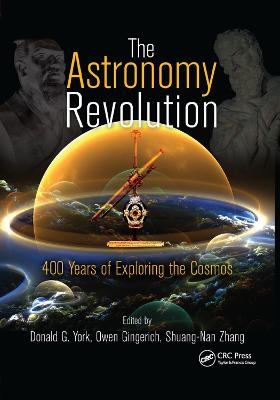
The Astronomy Revolution
CRC Press (Verlag)
978-0-367-38209-4 (ISBN)
Extensively illustrated in full color, this book consists of six parts. Aimed at young scientists, the first part presents perspectives on creativity and technology in scientific discovery. In the second part, contributors examine how the telescope has impacted our knowledge of the Universe—from the formation of galaxies to the death of stars. The third part of the book outlines some of the challenges we face in understanding dark matter, dark energy, black holes, and cosmic rays, and the fourth part discusses new technologies that will be useful in attacking new and unresolved questions. The fifth part of the book examines the intellectual impact that the telescope has had on society in China and in the West.
The book concludes with an investigation of "big questions": What is the origin of the laws of physics as we know them? Are these laws the same everywhere? How do these scientific laws relate to the moral laws of society? Does what we know depend on cultural ways of asking the questions? Is there life elsewhere? And what about the questions that science cannot answer? Celebrating the historical significance of the telescope, this unique book seeks to inspire all those involved or interested i
To see video presentations from the New Vision 400 conference celebrating the 400th anniversary of the invention of the telescope, see the New Vision 400 web site. Donald G. York, Chief Editor, is Horace B. Horton Professor of Astronomy and Astrophysics at The University of Chicago. He was the founding director of the Apache Point Observatory in Sunspot, New Mexico, and of the Sloan Digital Sky Survey, one of the most ambitious collaborative projects ever undertaken by astronomers. He is also the founder and co-director of the Chicago Public Schools/University of Chicago Internet Project, a neighborhood schools technology initiative. Owen Gingerich, Co-Editor, is Professor Emeritus of Astronomy and of the History of Science at Harvard University and a senior astronomer emeritus at the Smithsonian Astrophysical Observatory (Harvard-Smithsonian Center for Astrophysics). He is co-author of two successive standard models for the solar atmosphere and is a leading authority on the 17th-century astronomer Johannes Kepler and the 16th-century cosmologist Nicolaus Copernicus. A world traveler, he has successfully observed 14 total solar eclipses. Shuang-Nan Zhang, Co-Editor, is Professor and Director of Key Laboratory of and Center for Particle Astrophysics in the Institute of High Energy Physics of the Chinese Academy of Sciences, as well as Research Professor of Physics at the University of Alabama in Huntsville. He is also the chief scientist of the Space Science Division of the National Astronomical Observatories of China and heads the X-ray Imaging Laboratory, which is leading several space x-ray astronomy missions in China, as well as the space astronomy program onboard China's Spacelab and Space Station.
Introduction: The New Vision 400 Project. Creativity and Technology in Astronomical Discovery. Impact of Telescopes on Our Knowledge of the Universe. Some Near-Term Challenges in Astronomy. Technologies for Future Questions. Intellectual Impact of the Telescope on Society. "Big Questions" Raised by New Knowledge. Appendix: The New Vision 400 Conference. Index.
| Erscheinungsdatum | 01.10.2019 |
|---|---|
| Verlagsort | London |
| Sprache | englisch |
| Maße | 178 x 254 mm |
| Gewicht | 834 g |
| Themenwelt | Naturwissenschaften ► Physik / Astronomie ► Astronomie / Astrophysik |
| ISBN-10 | 0-367-38209-1 / 0367382091 |
| ISBN-13 | 978-0-367-38209-4 / 9780367382094 |
| Zustand | Neuware |
| Haben Sie eine Frage zum Produkt? |
aus dem Bereich


